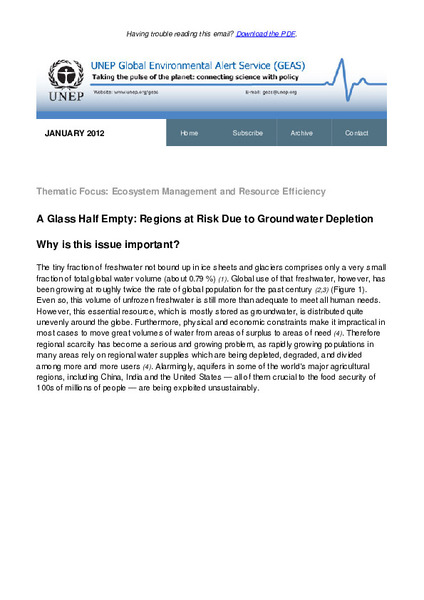| dc.description | The tiny fraction of freshwater not bound up in ice sheets and glaciers comprises only a very small fraction of total global water volume (about 0.79 %) (1). Global use of that freshwater, however, has been growing at roughly twice the rate of global population for the past century (2,3) (Figure 1). Even so, this volume of unfrozen freshwater is still more than adequate to meet all human needs. However, this essential resource, which is mostly stored as groundwater, is distributed quite unevenly around the globe. Furthermore, physical and economic constraints make it impractical in most cases to move great volumes of water from areas of surplus to areas of need (4). Therefore regional scarcity has become a serious and growing problem, as rapidly growing populations in many areas rely on regional water supplies which are being depleted, degraded, and divided among more and more users (4). Alarmingly, aquifers in some of the world's major agricultural regions, including China, India and the United States all of them crucial to the food security of 100s of millions of people are being exploited unsustainably. | en_US |


